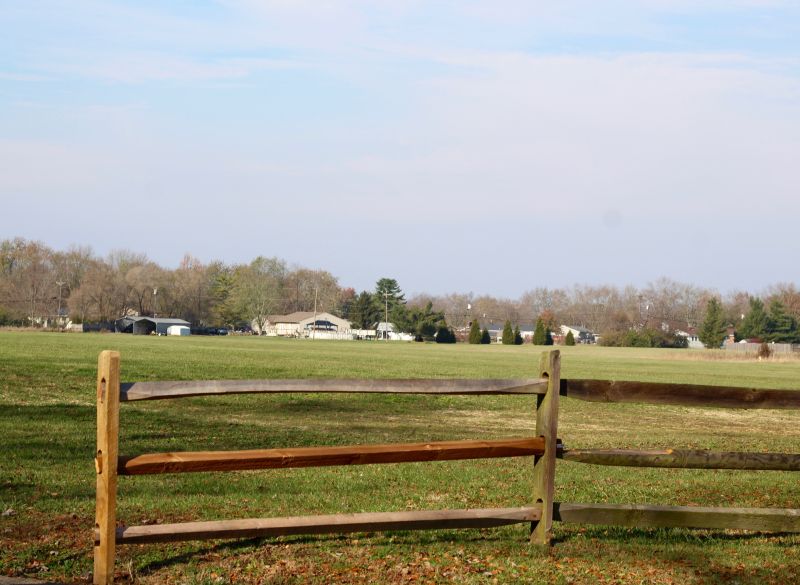Expert Picks for Cattle Fence Replacement Materials and Accessories
Discover trusted products recommended by industry professionals to improve the durability and effectiveness of your cattle fencing.
 Maintaining a secure and durable fence is essential for effective cattle management. When it comes to replacing or upgrading existing fencing, selecting the right products can significantly influence the longevity and functionality of the enclosure. Various materials and designs are available to suit different needs, from traditional wire and wood to modern synthetic options. Understanding the strengths and limitations of each type helps in making informed decisions that align with specific farm requirements.
Maintaining a secure and durable fence is essential for effective cattle management. When it comes to replacing or upgrading existing fencing, selecting the right products can significantly influence the longevity and functionality of the enclosure. Various materials and designs are available to suit different needs, from traditional wire and wood to modern synthetic options. Understanding the strengths and limitations of each type helps in making informed decisions that align with specific farm requirements.
Top Overall Option
High-Tensile Wire Fencing System
A high-tensile wire fencing system offers a versatile and durable solution for cattle containment. Known for its strength and flexibility, this type of fencing can withstand the pressure exerted by livestock while maintaining its integrity over time. Its ease of installation and ability to be tensioned properly make it a popular choice among farmers looking for a reliable fencing option. When properly maintained, high-tensile wire can provide years of effective service, making it a practical investment for cattle operations.
Types of Products For Cattle Fence Replacements
High-Tensile Wire
Strong and flexible, suitable for large pastures and long-term use.
Woven Wire Mesh
Traditional barrier offering excellent containment, especially for smaller herds.
Electric Fencing Tape
Lightweight and easy to install, provides effective livestock control with minimal material.
Poly Wire Electric Fence
Durable and conductive, ideal for temporary or rotational grazing setups.
Wooden Posts
Classic support structure offering stability and aesthetic appeal.
Metal T-Posts
Durable and easy to install, suitable for supporting various fencing materials.
Barbed Wire
Traditional fencing option, often used in combination with other fencing types.
Vineyard Fencing
Specialized fencing designed for vineyards but adaptable for cattle enclosures.
Plastic Mesh Fencing
Lightweight and corrosion-resistant, suitable for temporary or portable fencing.
Rubber Ties and Clips
Secure fencing connections and tensioning, compatible with various fencing types.
Solar Electric Fencers
Eco-friendly energizers powered by solar panels, ideal for remote locations.
Insulators
Prevent grounding and ensure proper electric fence operation.
Corner and End Posts
Structural components that provide stability at fence corners and ends.
Line Posts
Support intermediate sections of fencing for added strength and alignment.
Gate Hardware
Reliable hinges and latches for secure and easy access points.
Popular Choices
Widely used due to its ease of installation and livestock control capabilities.
A common choice for its strength and adaptability across different terrains.
Popular for its traditional appearance and effective containment.
Favored for their durability and ease of installation in various settings.
Increasingly used for their convenience and independence from power sources.
Versatile for temporary fencing and rotational grazing systems.
Traditional fencing option, often combined with other fencing types for added security.
Popular for lightweight and portable fencing needs.
Essential for electric fencing systems to ensure proper functioning.
Critical for secure and functional access points in fencing systems.
Vital for maintaining fence structure and stability.
Support for intermediate fencing sections, contributing to overall integrity.
Traditional support option offering aesthetic appeal and stability.
Popular in specialized applications, adaptable for cattle enclosures.
Helpful for securing fencing materials and maintaining tension.
Fence replacements often involve evaluating the terrain, cattle behavior, and maintenance preferences. For instance, high-tensile wire offers flexibility and strength, making it suitable for large pastures, while woven wire provides a more traditional barrier that can prevent cattle from pushing through. Electric fencing is another popular choice, offering a lightweight and cost-effective solution that can be easily installed and adjusted. Combining different types of fencing can also enhance security and containment, especially in areas prone to cattle pushing or escaping.
Durability and ease of installation are key considerations when selecting fence replacement products. Materials that resist corrosion, rot, and weathering tend to last longer and require less maintenance over time. Additionally, products with straightforward installation procedures can reduce labor costs and downtime. It is also advisable to consider the availability of replacement parts and accessories, such as insulators, posts, and energizers, to ensure a seamless upgrade process.
Ultimately, choosing the right products for cattle fence replacements involves balancing cost, durability, ease of use, and suitability for the specific landscape. Properly selected fencing can enhance cattle safety, reduce maintenance efforts, and improve overall farm management efficiency. Whether upgrading an existing fence or installing a new one, taking the time to research and select appropriate materials can lead to a more resilient and effective enclosure system.
Key Buying Considerations
- Assess the terrain and environmental conditions to select appropriate fencing materials.
- Determine the size and behavior of the cattle herd to choose suitable containment options.
- Consider the longevity and resistance to weathering of fencing materials to reduce maintenance.
- Evaluate ease of installation and whether professional help is needed for setup.
- Think about future expansion or modifications to the fencing system.
- Check compatibility of replacement parts such as insulators, posts, and energizers.
- Balance initial costs with long-term durability and maintenance expenses.
- Select fencing types that align with your management practices, such as rotational grazing.
- Ensure compliance with any local regulations or farm standards regarding fencing.
- Evaluate the safety features of electric fencing, including proper grounding and warning signs.
- Consider the aesthetic impact of fencing on the farm landscape.
- Review product warranties and customer support options.
- Determine if portable or permanent fencing solutions are more suitable for your operation.
- Assess the availability of replacement parts and accessories in your area.
- Plan for future upgrades or integration with existing fencing infrastructure.
